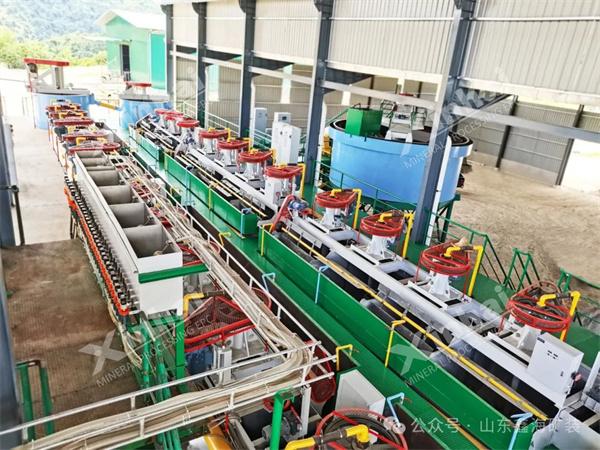Phosphate ore beneficiation is the process of removing impurities from primary phosphate ore, separating phosphate ore from gangue minerals, and finally obtaining high-grade concentrate. In this process, in order to obtain good beneficiation indicators and achieve the expected economic benefits, controlling beneficiation costs is of paramount importance. This article will discuss the composition of phosphate ore beneficiation costs and strategies to reduce phosphate ore beneficiation costs, and provide a practical cost control solution for phosphate ore beneficiation plants.
The phosphate ore dressing cost mainly includes the following aspects:
Raw material cost: including the cost of ore mining, transportation and crushing and screening, which is the basis of the overall cost of ore dressing.
Energy consumption cost: involves the power consumption of several workshops such as crushing and screening, grinding and grading, flotation, concentration and dehydration.
Equipment maintenance cost: including the cost of repair and maintenance of all ore dressing equipment, replacement of parts, etc.
Labor cost: refers to the labor and related costs required in the ore dressing process.

2.1. Optimize the beneficiation process: Design a suitable beneficiation plan according to the properties and composition of the ore, improve the grade of phosphate ore, reduce resource waste, and reduce the cost of beneficiation.
2.2. Improve equipment utilization: Improve production efficiency, reduce energy consumption and maintenance costs per unit product, and scientifically arrange production plans and equipment maintenance.
2.3. Automation and intelligent management: Introduce automation and intelligent management systems to monitor production data in real time, achieve scientific decision-making, reduce human errors, optimize production processes, and reduce costs.
2.4. Reasonable human resource allocation: Improve employee skills through training, reduce labor waste, and reduce unnecessary job settings and reduce labor costs through management optimization.
2.5. Efficient energy consumption management: Significantly reduce energy consumption by optimizing the process flow.
2.6. Phosphate ore research and testing: Before determining the appropriate beneficiation process, it is very important to conduct detailed phosphate ore research and laboratory testing. Understanding the physical properties, mineral composition, and ore structure of the ore will help optimize the beneficiation process and reduce unnecessary steps and costs.
2.7. Optimize the phosphate beneficiation process: For example, the adoption of "more crushing and less grinding" can effectively reduce the energy consumption of the crushing and grinding process, thereby reducing the cost of phosphate beneficiation. In addition, by optimizing the flotation process, such as adjusting the particle size, reagent dosage and process conditions, the recovery rate of phosphate ore and product quality can be improved while reducing costs.
2.8. Reasonable use of chemical reagents: It can effectively manage reagent consumption and improve the recovery rate and product quality of phosphate ore. Consider the effect of alternative reagents and find more economical and efficient options. According to the experimental and test results, the dosage of reagents is precisely controlled to avoid excessive use of reagents, because excessive use will increase costs and may not bring additional benefits.
2.9. Phosphate tailings reprocessing: By reprocessing the phosphate beneficiation waste (tailings) that has been generated, the resource utilization efficiency can be improved, the environmental impact can be reduced, and more valuable materials can be recovered from the waste.
Phosphate beneficiation cost control is a multi-faceted and multi-level issue involving raw material procurement, process optimization, equipment maintenance, human resource management, and energy consumption management. By comprehensively considering these factors and adopting corresponding strategies, the cost of phosphate ore dressing can be effectively reduced and the economic benefits and market competitiveness of enterprises can be improved. With the advancement of technology and the improvement of environmental protection requirements, the future phosphate ore dressing will pay more attention to the efficient use of resources and the sustainable development of the environment.